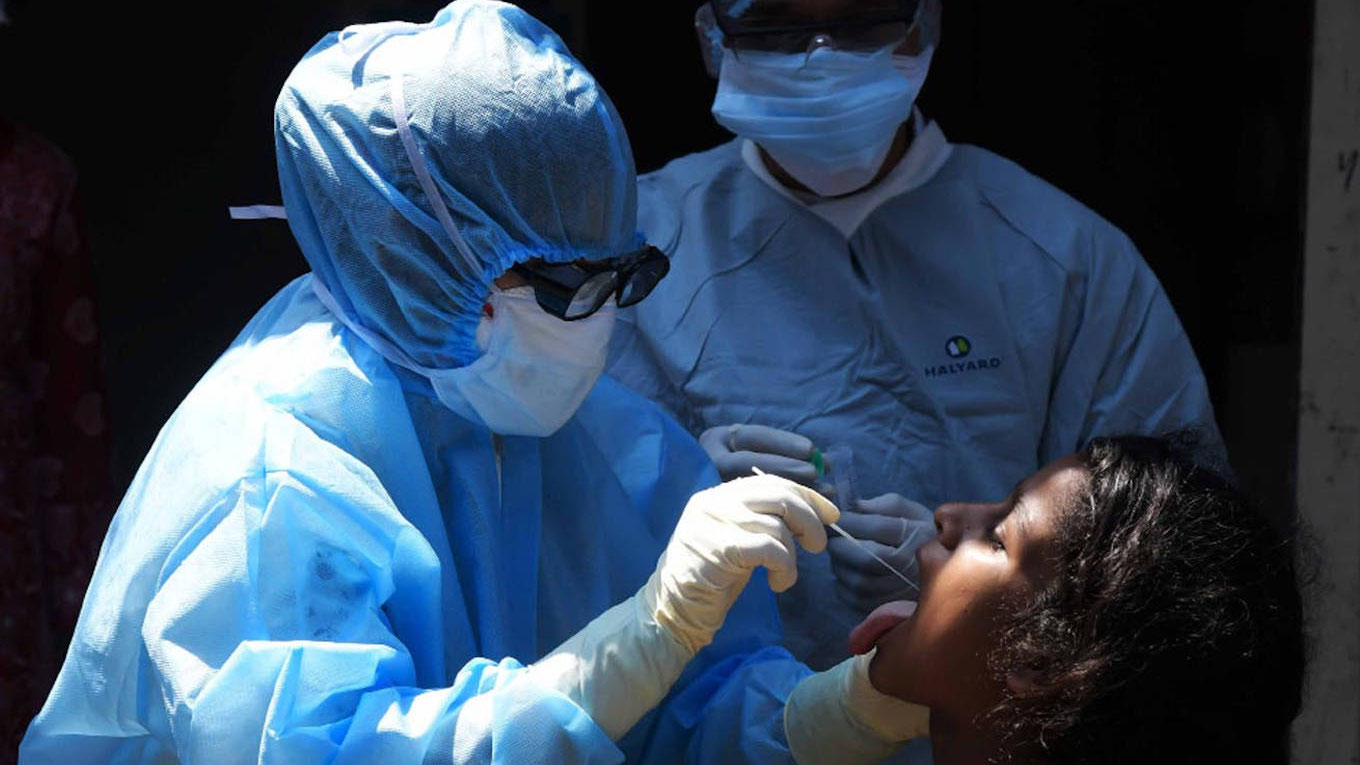-
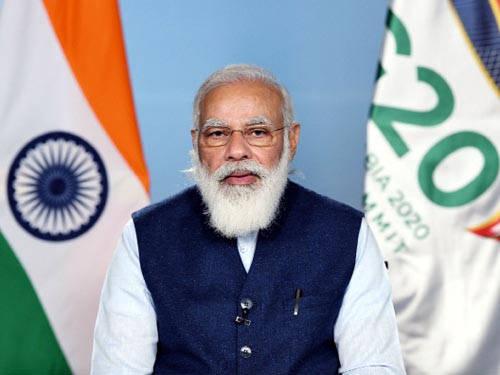
Modi: take all precautions
Likewise, the Rajasthan government in a series of Cabinet decisions on 21 November announced that the penalty for appearing in public without a mask would be increased from Rs200 to Rs500, night curfew would be imposed in the eight district headquarters and hospitals attached to private medical colleges would be converted into Covid Hospitals.
Noting that the worst affected districts were Kota, Jaipur, Jodhpur, Bikaner, Udaipur, Ajmer, Alwar and Bhilwara, the Rajasthan government has imposed a ceiling of 100 persons for political, academic, religious and other gatherings. Also, the organisers shall ensure social distancing with a pre-announced seating plan, allow only those attendees, who are wearing masks and make adequate arrangements for thermal screening of guests as well as hand sanitisers. Markets and commercial establishments would have to close by 7 pm, and would not be allowed to open before 6 am.
Goa state government has also recorded a spike in Covid-19 cases with 125 fresh cases in the third week of November. Accordingly, it has made thermal screening compulsory for all arrivals at the state’s airport and railway stations.
Given that Maharashtra shares borders with both Gujarat and Goa, it has also decided to monitor the arrivals from these states. Its order states that people arriving in Maharashtra by air or by rail from these four designated states will have to carry Covid negative reports that are less than 72-96 hours old. The tests should have conducted by RT-PCR method. However, the Maharashtra Cabinet has decided against a general lockdown despite the relatively high numbers of Covid-19 cases in the state. It has, however, temporarily imposed Section 144 in some parts of Mumbai and other districts.
Elsewhere in the world, major European nations are grappling with a fresh wave of Covid-19 that started in October. The British Medical Journal (BMJ) reported in late October that, in Belgium, over 8,000 people were being diagnosed with the disease each day, bringing their total number to over 160,000 in September and October. The government has closed bars and restaurants and imposed a night time curfew starting 28 October. After more than 30,000 cases were recorded in France in a single day in October, a strict 9 pm to 6 am curfew was imposed for four weeks in Paris and eight other cities. Now, however, the French government is considering a graded relaxation for the forthcoming holiday season in December.
The Czech Republic began its second lockdown on 22 October, after the country recorded more than 12,000 Covid-19 positive cases in a single 24-hour period, which included their Deputy Prime Minister as well. Around the same time, Ireland entered a six-week lockdown period, ahead of almost every other European nation, after the country’s healthcare system was nearly overwhelmed by people who needed to be tested. Likewise, Italy has been reporting an average of 25,000 positive cases each day, Poland about 18,000 and Sweden just below 2,000 every day.
Also in October-end, Germany has imposed a month-long partial lockdown that requires bars and restaurants, gyms, movie theatres, pools and concert venues to be shut but the government has decided to keep schools and shops open, provided they follow the social distance and hygiene norms conscientiously.
-
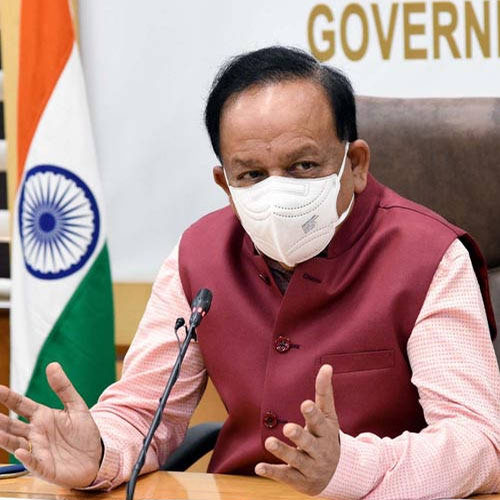
Vardhan: follow the guidelines
US on top
Though Spain had one of Europe’s highest caseloads of Covid-19 cases in the first wave earlier this year, with more than 18,000 cases every day in September and October, the Spanish government has resisted pressure to impose a complete national lockdown. It has instead chosen a night time curfew with some additional restrictions in the worst affected regions. Thus, local authorities of Galicia and Murcia regions have ordered bars and restaurants to stay shut, while Barcelona has seen violent clashes after strict curbs were put in place.
Among the highest in the world is the US, where the total number of Covid-19 positive cases has crossed 12 million and over 250,000 people have succumbed to the disease. The maximum numbers of cases within the US have been reported from Texas, California, Florida and Illinois. Accordingly, a number US states have imposed varying degrees of restrictions, mostly on bars and restaurants as well as people travelling in groups. Media reports in the US suggest that even small gatherings like a dinner party with a few friends can significantly increase the spread of the disease.
The saving grace, however, is that incoming flights to India from the US, the UK, continental Europe and other countries are not permitted freely. The Indian government has allowed a limited number of flights from 18 countries under the bilateral Air Bubble Agreements made applicable from mid-November this year. These countries are: the US, the UK, France, Germany, the UAE, the Maldives, Canada, Japan, Bahrain, Afghanistan, Nigeria, Qatar, Iraq, Oman, Bhutan, Kenya, Bangladesh and Ukraine. This is significant because air passengers are an established mode of Covid infection spread from one country to another.
A case study from New Zealand published in a prestigious journal in late October reported that as many as seven Covid-19 positive people were found to have arrived in a single flight from Dubai to Auckland. They were identified through a system of MIQ (Managed Isolation and Quarantine) put in place by the New Zealand government since March 2020. Laboratory analysis of these seven people revealed that at least four had caught the disease while inside the aircraft itself!
In view of these risks, the Union Health Ministry has promulgated a series of guidelines and restrictions for international travelers coming into India with effect from 5 November. Thus, before making their travel plans, the passengers should agree in writing to undergo 14 days quarantine at home or any institution as decided by the medical authorities present at the airport. Exceptions to this requirement for medical reasons should be applied for in advance. Travellers who are carrying a negative Covid test report (done by RT-PCR method) may be exempted from the quarantine requirements. Details of other terms and conditions are mentioned on the Delhi Airport website (www.newdelhiairport.in).
-
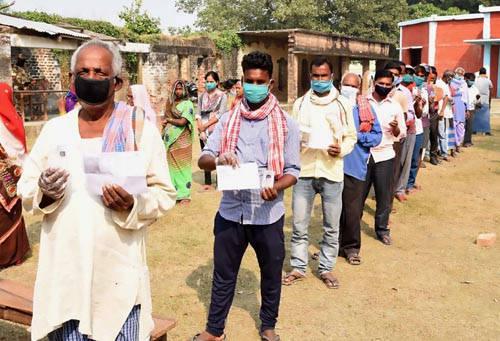
Long queues like this, only add to the woes of a pandemic
All the above cases reported from various countries are instances of unintended transmission of the corona virus. However, Interpol, the worldwide law enforcement agency usually responsible for controlling crime across national borders, has also warned that deliberate spread of the infection cannot be ruled out. In its latest edition of Covid-19 guidelines published in mid-November, the Interpol has drawn attention to miscreants, who have intentionally tried to spread the infection by spitting on the faces of police officials, health professionals and local authorities.
It also mentions a few instances where allegedly contaminated letters had attempted to target political leaders in various countries. “Certain infected individuals may travel from affected areas to unaffected locations despite their medical condition and any travel restrictions that may be in place,” the report cautions. It also speaks about individual bids to sell samples of contaminated body fluids such as sputum and saliva through online channels.
As the infection spreads across most parts of the world, both governments and ordinary people are waiting with bated breath for vaccines against Covid-19 to become available in the market. But, the wait could be a bit longer than what everybody thought. The launch of any new medicine in the market is a complex procedure, with plenty of cautions and safeguards that need to be observed. The challenge is much more, if the disease has appeared just about a year ago and the product in question is a vaccine to be given to otherwise healthy people.
At one stage, there were nearly a hundred vaccine candidates, which are biological substances that could possibly become the means of protecting millions of people from Covid-19. But now it appears that three or four of them have gone far ahead in the clinical trials than others and global pharmaceutical giants are almost ready to start manufacturing them.
Among the frontrunners are the Pfizer-Biontech vaccine, the Moderna vaccine, the Oxford-AstraZeneca vaccine and the Russian-made Sputnik V. Sometime in July-August this year, the Oxford-Astra Zeneca offering, also known as the Chadox-1 vaccine was ahead of the curve, but it seems to have fallen behind the others.
The first company to announce successful clinical trials was Pfizer, which had developed its research product in partnership with Biontech, a small German company. The vaccine based on m-RNA technology was reported to have an efficacy of over 90 per cent and very few side effects. Within a week of the 9 November announcement, Moderna, which is Pfizer’s closest rival for the international Covid-19 vaccine market announced that their product had been proved 94.5 per cent successful in the final stage of clinical trials.
This was based on interim analysis of the results and not a final conclusion. However, Moderna is planning to submit these data to the US FDA and seek Emergency Use Authorisation for its product. This is a special provision for medicines and health products that are urgently needed; hence, the product is provisionally approved before the full trial and studies are completed.
-
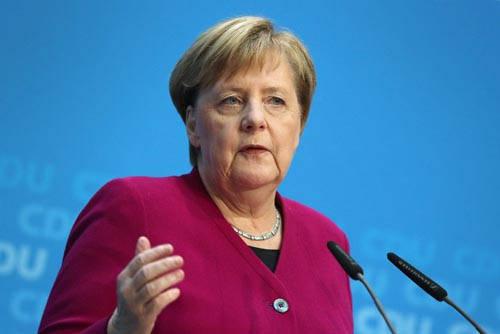
Merkel: Germany has imposed a month-long partial lockdown
Causing confusion
Just a few days later, Astra Zeneca made its own results public in a rather complicated fashion. The company said its vaccine option had an efficacy of 62-90 per cent, with an average efficacy of about 70 per cent! The first news reports therefore mentioned its efficacy as being ‘up to’ 90 per cent, leading to much confusion in the reading and viewing public.
Soon, however, a series of questions began to emerge that sought to diminish the glimmer of all three vaccine choices. First, members of the scientific community noticed that the trial results were first publicised in the general news media, rather than the scientific journals. This could be because publication in the academic journals often takes months and the vaccine was needed in the market quite urgently.
Second, not enough information was available about safety aspects of these vaccines and how they differed in populations across the world and in various age-groups.
Third, there are reports that both the Moderna vaccine and the Pfizer product have to be stored in temperatures of minus 20 to minus 70 degrees, if they are to last their complete lifespan of up to four months. The AstraZeneca product, on the other hand, can be stored at temperatures of 2-8 degrees, which means the standard refrigerator in most hospitals would be quite sufficient.
Finally, there is the matter of cost – $25-35 for the US companies’ products, as against $3-6 for the AstraZeneca vaccine. This would make a difference to national health budgets everywhere, because hundreds of millions of people all over the world would have to be protected from the disease.
GAVI plays a key role
In India alone, if all the vulnerable groups such as health workers, police and local officials, senior citizens and people with co-existing disease, the total number could add up to 300-400 million people. All of them would require two doses, which brings us to a total of 800 million doses, which would place a strain on a majority of vaccine manufacturers. Hence, the entire calendar year of 2021 would probably pass before everyone in India could get adequate protection through the vaccine.
To ensure that nobody is deprived of the vaccine due to paucity of funds, GAVI, the Vaccine Alliance is working with governments to raise the funds required. COVAX, the financing mechanism spearheaded by GAVI, has already raised $2 billion for this purpose, but it must raise another $5 billion just for 2021. Some of the vaccine developers have offered to limit their profits but neither Pfizer nor Moderna has made any such promises. Meanwhile, the governments of several developed nations including the UK and the US have already pre-ordered hundreds of millions of doses from various vaccine producers.
In India as well as in other countries, vaccine developers have sealed agreements with other companies that would concentrate on manufacturing. Thus, Serum Institute of India, based in Pune, has firmed up arrangements with AstraZeneca to make millions of doses of the Oxford vaccine, mainly intended for India and certain low-income geographies.
-

Macron: considering a graded relaxation
Likewise, the Russian Direct Investment Fund (RDIF), the Russian sovereign wealth fund, has reached an agreement with Hetero, a leading Hyderabad-based generic pharmaceutical company to produce 100 million doses of Sputnik-V, a Russian version of the Covid-19 vaccine. They are planning to production of the vaccine from the beginning of 2021. The agreement followed the positive interim results of one of the world’s largest Phase III clinical trials of the Sputnik-V vaccine.
It was developed by Gamaleya Research Institute of Epidemiology and Microbiology, Moscow. “The uniqueness of the Russian vaccine lies in the use of two different vectors based on the human adenovirus, which allows for a stronger and longer-lasting immune response to the virus, compared with vaccines that use the same vector for both doses,” says a news release from Hetero.
The m-RNA vaccines, such as the one being marketed by Moderna, which generate the immune by inserting a bit of genetic material drawn from the Corona Virus itself, could perhaps be more effective than the Russian product.
Along with the manufacture of vaccines, an equally important aspect is ensuring access to people who need it the most, irrespective of where they are located. To supplement these efforts, Oracle, the global software giant has joined hands with the Tony Blair Institute (TBI), UK (former UK Prime Minister Tony Blair is the executive chairman of the Institute). For a start the partnership will help countries in Africa to use the Oracle Health Management System to create electronic health records for their vaccine management programmes.
“As the pandemic continues, partnerships such as this one between Tony Blair Institute, Oracle and various governments are critical to strengthening of public health institutions in member states,” says John, Nkengasong, Director, Africa Centres for Disease Control and Prevention. TBI has provided policy advice and hands on support to African governments as they tackle the complex challenges of Covid-19. “Though Africa has coped well with Covid-19, it still needs to be part of international efforts to control the disease,” said Tony Blair, in a news release dated end November.
A question that has hardly been dealt with at this stage is: how long does the vaccine offer protection from Covid-19. Expert estimates vary from as little as three months up to about 12 months. This means that in the best case scenario, Indian industry would have to come up with 800 million doses of the vaccine every year! It could prove nearly impossible! This is what the WHO Director General Tedros Adhanom sought to convey, when he said vaccination alone would not be able to bring the pandemic to an end.
The unkindest cut however comes from a growing body of medical literature pointing to a phenomenon known as ‘Long Covid’, according to which, apparently, 10-20 per cent of the people could experience a series of lingering symptoms after the disease has run its usual course. A 20-page WHO document on the subject, released in September, mentions that 10-15 per cent of the people develop severe illness, after recovering from Covid-19 infection.
-

Sanchez: night time curfew in Spain
In some people, the symptoms may linger on for weeks or even months after the primary disease. A small percentage of these might even become critically ill, just as in the primary infection. However, these patients usually do not spread the infection to other people.
Prolonged illness
The symptoms that may persist include: cough, congestion, shortness of breath, fatigue, chest pain, abdominal pain, nausea, diarrhea, etc. The WHO document also points out that this form of prolonged illness may sometimes affect young adults and even children, not afflicted with co-existing ailments such as diabetes, high blood pressure and bronchial asthma. In the age group of 18 to 34 years, as many as 20 per cent of otherwise patients reported that some symptoms of Covid-19 persisted beyond the initial disease. There are also reports of permanent heart and lung damage and even loss of memory and concentration, etc. on account of Covid-19.
The prestigious medical journal Lancet mentions that almost half the patients who have been admitted to a hospital with serious Covid-19 infection would develop kidney damage later on. A BMJ article on the same subject recommends the use of hand-held pulse oximeters for monitoring people with persistent shortness of breath. All the reports in medical journals stress that these are initial findings on a new medical condition, and much more detailed research is needed with follow up of the patients over much long periods.
For each one of us, there is another, more ominous message. Widely disseminated information that Covid-19 is a harmless and non-threatening disease is in fact misleading enough to be dangerous. If the disease adopts a somewhat chronic form in almost 10 per cent of patients, even after they have apparently recovered, it really means that everyone who gets the infection faces the same risk. Besides, this estimate of prolonged Covid-19 would even be an underestimate, according to some research studies.
Despite the best medicines and the most effective medical treatment, no one who catches the infection is truly safe. The only way to remain totally safe is to rigorously follow the containment measures such as wearing a mask, observing social distancing norms, washing hands and face as often as necessary.
Most of us did not notice that, on 17 November this year, the corona virus completed one year after it was first discovered. For a microbe that caused such havoc all over the planet, a more dubious ‘anniversary’ can hardly be imagined!
-
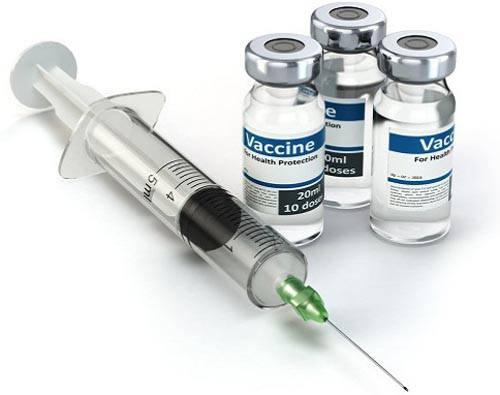
Companies are working hard towards the production of syringes, needles, etc, so that they are not in short supply
Syringes and needles for Covid-19
While the leading pharmaceutical manufacturers in India and other countries are straining every nerve to ensure that the various vaccines are available in sufficient quantities, other companies are working hard towards the production of syringes, needles, etc, so that they are not in short supply. And, any one without the other would be completely futile!
Thus, the All India Syringes & Needles Manufacturers Association (AISNMA), a body of 19 major producers of these medical consumables has written to the PMO, offering to expand their manufacturing capacity by 350 million pieces every month. The association has further assured the nation of becoming ‘Atmanirbhar Bharat’ on the availability of syringes, adding that, if situation warrants, to serve the global community at this hour of crisis, “all the members are willing to take that challenge and strengthen the hands of our country leadership in this journey”.
The association has also pledged to support the government and ensure timely supplies across the country in an efficient manner during the vaccination programme. “We look forward for an opportunity to serve our country and humanity at this moment of crisis, so that India emerges as a strong leader globally in a short span of time,” the letter notes.
Another company, Schott-Kaisha, a joint venture between Schott AG of Germany and Kaisha Life Sciences, based in Gujarat, has expanded its capacity of vaccine vials by about 300 million pieces. To do this, it set up a new manufacturing plant with an investment of Rs105 crore and completed the construction of the facility with 12 months. With its recently opened facility in Umarsadi, Gujarat, the company was already producing over 3 billion pieces of ampoules, vials, syringes, and cartridges annually. The company is providing vaccine vials to all the key vaccine developers in the country as well as manufacturers abroad.
“Pharma companies all around the world are working relentlessly to find an effective vaccine for Covid-19,” says Rishad Dadachanji, director, Schott-Kasiha. “As a front-runner in the pharmaceutical packaging segment, we are committed to support the vaccine developers with the best packaging solutions. We are closely working with all our clients to supply them with vials and syringes for their vaccine trials and are continuously assessing their requirements to stay ahead of the curve”.
